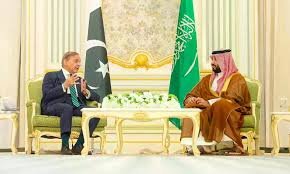 Islamabad, Sept 23: Saudi Arabia continues to be a significant source of affordable foreign loans for Pakistan, offering an annual interest rate of just 4%. This rate is notably lower than those from other international lenders, including China and commercial banks. According to official records, Pakistan has secured two separate cash deposit facilities from Saudi Arabia in recent years, each carrying this favorable interest rate. Initially contracted for one-year terms, these loans have been rolled over annually without additional costs, providing Pakistan with much-needed financial relief
Islamabad, Sept 23: Saudi Arabia continues to be a significant source of affordable foreign loans for Pakistan, offering an annual interest rate of just 4%. This rate is notably lower than those from other international lenders, including China and commercial banks. According to official records, Pakistan has secured two separate cash deposit facilities from Saudi Arabia in recent years, each carrying this favorable interest rate. Initially contracted for one-year terms, these loans have been rolled over annually without additional costs, providing Pakistan with much-needed financial relief The affordability of Saudi loans stands in contrast to other financing options available to Pakistan. For instance, loans from China are approximately one-third more expensive, and foreign commercial borrowing costs are more than double the rate offered by Saudi Arabia. A USD 2 billion Saudi cash deposit facility is set to mature in December, with plans for renewal, while another USD 3 billion loan obtained to cover external financing gaps under the IMF program is due for maturity in June next year
These Saudi loans play a crucial role in supporting Pakistan’s foreign exchange reserves, which are vital for maintaining economic stability. Together with similar commitments from China and the United Arab Emirates, these loans constitute a significant portion of Pakistan’s foreign reserves. However, as the International Monetary Fund’s (IMF) influence diminishes, Pakistan is increasingly relying on credit guarantees from multilateral banks to access international markets, highlighting the evolving dynamics of global financial support .
In summary, Saudi Arabia’s provision of low-interest loans is a cornerstone of Pakistan’s economic strategy, offering a more cost-effective alternative to other international lenders and playing a pivotal role in the country’s financial stability.



